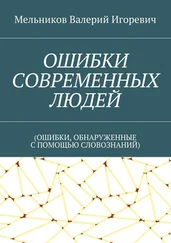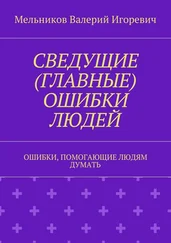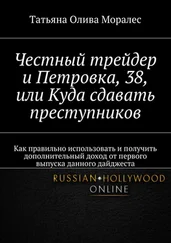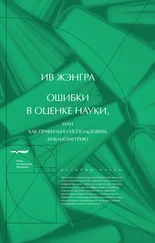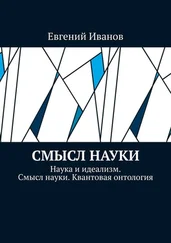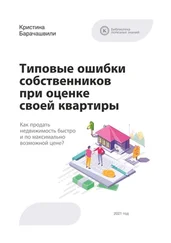D. D. Guttenplan, “Questionable science behind academic rankings,” in New York Times , 15 November, 2010, доступно по адресу: http://www.nytimes.com/2010/11/15/education/15iht-educLede15.html?pagewanted=all&_r=0.
Вернуться
157
http://www.topuniversities.com/node/4414/ranking-details/world-niversity-rankings/2012.
Вернуться
158
См.: Martin Enserink, “Who ranks the university rankers?” in Science , 317, 24 August, 2007, pp. 1026–1028.
Вернуться
159
Mathilde Munos, “Classement de Shanghai des universités: ‘La France grignote des places’ (Fioraso),” in France Info , 15 August, 2013; http://www.franceinfo.fr/education-jeunesse/les-invites-de-france-info/classement-de-shanghai-des-universites-la-france-grignote-des-places-fiora.
Вернуться
160
Категория «высокоцитируемые исследователи» ( highly cited researchers ) была введена для обозначения 1 % наиболее часто цитирующихся статей, учитываемых в индексах научного цитирования (рассчитывается за определенный период для различных областей науки).
Вернуться
161
Yudhijit Bhattacharjee, “Saudi Universities Offer Cash in Exchange for Academic Prestige,” Science 334, December 9, 2011, pp. 1344–1345. См. также многочисленные реакции в: Science 335, March 2, 2012, pp. 1040–1042 и на их сайте, http://comments.sciencemag.org/content/10.1126/science.334.6061.1344, дата доступа: 15 декабря 2015 г.
Вернуться
162
Здесь я ссылаюсь на публикацию Thomson Reuters “2014 HCR as of September 8, 2015,” см.: http://highlycited.com, дата доступа: 21 декабря 2015 г.
Вернуться
163
Étienne Gless, “Ipag: Les secrets d’une progression ‘fulgurante’ en recherche,” L’Etudiant.fr, October 9, 2014, http://www.letudiant.fr/educpros/enquetes/ipag-les-secrets-d-une-progression-fulgurante-en-recherche.html.
Вернуться
164
EFMDP Quality Improvement System, EQUIS Standards and Criteria , January 2014, p. 64, https://www.efmd.org/images/stories/efmd/EQUIS/2014/EQUIS_Standards_and_Criteria.pdf.
Вернуться
165
См.: Sébastien Mosbah-Natanson, Yves Gingras, “The globalization of social sciences? Evidence from a quantitative analysis of 30 years of production, collaboration and citations in the social sciences (1980–2009),” in Current Sociology , 62 (5), 2014, pp. 626–646.
Вернуться
166
William Bruneau, Donald C. Savage, Counting Out the Scholars: How Performance Indicators Undermine Universities and Colleges (Toronto: James Lorimer, 2002).
Вернуться
167
Stanford G. Thatcher, “The Crisis in Scholarly Communication,” in Chronicle of Higher Education, 1995, March 3, B1–B2; Carol Tenopir, Donald W. King, “Trends in Scientific Scholarly Journal Publishing in the United States,” in Journal of Scholarly Publishing , 1997, 28 (3), pp. 135–170; Glenn S. McGuigan, Robert D. Russel, “The business of academic publishing: A strategic analysis of the academic journal publishing industry and its impact on the future of scholarly publishing,” in Electronic Journal of Academic and Special Librarianship , 9 (3), http://southernlibrarianship.icaap.org/content/v09n03/mcguigan_g01.html; Vincent Larivière, Stefanie Haustein, and Philippe Mongeon, “The Oligopoly of Academic Publishers in the Digital Era,” in PLoS ONE , 2015, 10 (6), e0127502.
Вернуться
168
Mikael Laakso, Patrik Welling, Helena Bukvova, Linus Nyma, Bo-Christer Björk, and Turid Hedlund, “The Development of Open Access Journal Publishing from 1993 to 2009,” in PLoS ONE , 2011, 6 (6), e20961. doi:10.1371/journal.pone.0020961.
Вернуться
169
Zoe Corbyn, “Retractions up tenfold,” in Times Higher Education , 2009, (20 August), https://www.timeshighereducation.com/news/retractions-up-tenfold/407838.article; Richard van Noorden, “Brazilian citation scheme outed. Thomson Reuters suspends journals from its rankings for ‘citation stacking.’” in Nature , 2013, 500 (29 August), pp. 510–551; Charlotte J.Haug, “Peer-Review Fraud – Hacking the Scientific Publication Process,” in New England Journal of Medicine , 2015, 373 (17 December), pp. 2393–2395; Jeffrey Beal, “Predatory journals: Ban predators from the scientific record,” in Nature, 534 (16 June).
Вернуться
170
T. D. Wilson, “The Nonsense of ‘Knowledge Management’,” in Information Research , 2002, 8 (1), http://InformationR.net/ir/8-1/paper144.html; Michael Power, “The Audit Society – Second Thoughts,” in International Journal of Auditing , 2000, 4 (1), pp. 111–119.
Вернуться
171
Jonathan R. Cole, Steven Cole, Social Stratification of Science (Chicago: University of Chicago Press, 1973).
Вернуться
172
Pierre Bourdieu, “Forms of Capital,” in J. E. Richardson (ed.), Handbook of Theory of Research for the Sociology of Education (New York: Greenwood Press, 1986), pp. 241–258; Pierre Bourdieu, Science of Science and Reflexivity (Chicago: University of Chicago Press, 2004).
Вернуться
173
Bruno Latour, Steven Woolgar, “The Cycle of Credibility,” in Barry Barnes and David Edge (eds), Science in Context. Readings in the Sociology of Science (Cambridge, Mass.: MIT Press, 1982), pp. 34–43.
Вернуться
174
Harriet Zuckerman, Robert K. Merton, “Patterns of Evaluation in Science: Institutionalization, Structure, and Functions of the Referee System,” in Minerva, 1971, 9, pp. 66–100; Daryl E. Chubin, Edward J. Hackett, Peerless Science. Peer Review and US Science Policy (Albany: SUNY Press, 1990); Mario Biagioli, “From Book Censorship to Academic Peer Review,” in Emergences, 2002, 12 (1), pp. 11–45; David Abraham Kronick, “Devant le deluge” and Other Essays on Early Modern Scientific Communication (Lanham, MD: Scarecrow, 2004); Lewis Pyenson, “Physical Sense in Relativity: Max Planck edits the Annalen der Physik, 1906–1918,” in Annalen der Physik , 2008, 17 (2–3), pp. 176–189.
Вернуться
175
Thane Gustafson, “The Controversy Over Peer Review,” in Science , 1975, 190 (12 December), pp. 1060–1066.
Вернуться
176
Drummond Rennie, “Let’s make peer review scientific,” in Nature , 2016, 535 (7 July), pp. 31–33.
Вернуться
177
См.: Yves Gingras, Bibliometrics and Research Evaluation. Uses and Abuses (Cambridge, Mass.: MIT Press, 2016).
Вернуться
178
Isabelle Bruno, Emmanuel Didier, Benchmarking: L’État sous pression statistique (Paris: La Découverte, 2013).
Вернуться
179
Nicholas Wade, “Citation Analysis: A New Tool for Science Administrators,” in Science , 1975, 4187, pp. 429–432.
Читать дальше
![Ив Жангра Ошибки в оценке науки, или как правильно использовать библиометрию [калибрятина] обложка книги](/books/390964/iv-zhangra-oshibki-v-ocenke-nauki-ili-kak-pravilno-cover.webp)



